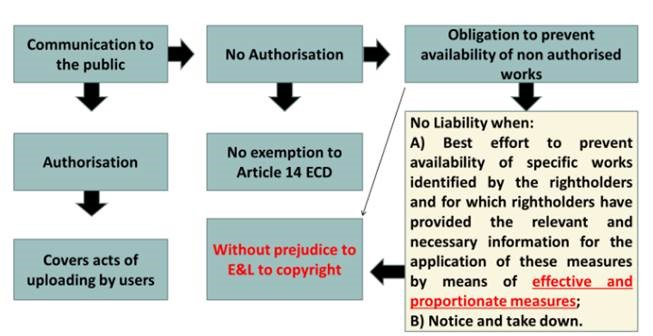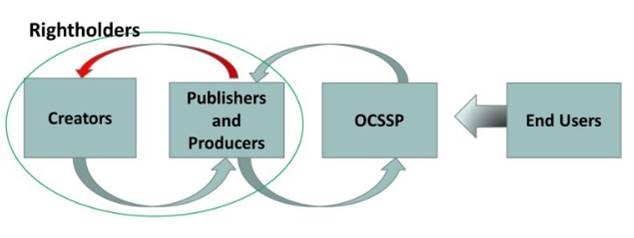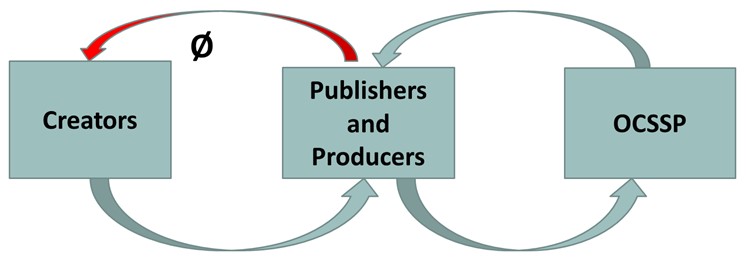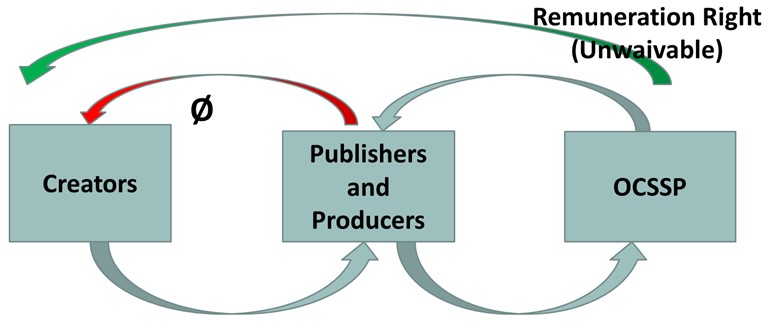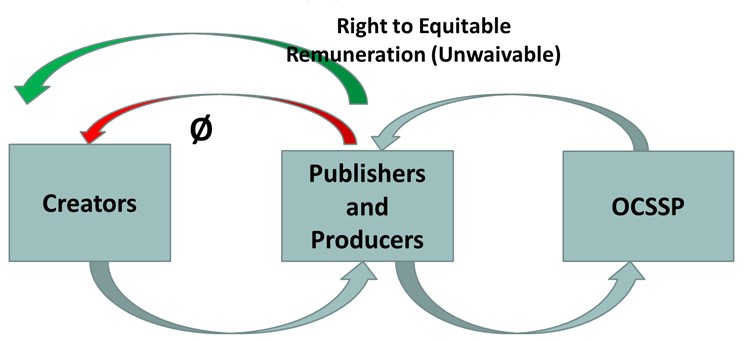While awaiting the vote (on 5 July 2018) of the European Parliament on the Legal Affairs (JURI) Committee Proposal on Article 13 of the draft Directive on Copyright in the Digital Single Market – commented on previously by Christina Angelopoulus – in this post we will focus on the Proposal agreed on by the European Council. The Council proposal takes a clear position, creating a special liability regime for providers which are considered to be performing acts of communication to the public or making available to the public of works uploaded by the users. The mechanism envisaged by the Council is not entirely different from that proposed by the Parliament. The latter though lacks some of the clarity of the Council’s text. In spite of the improvements that the Council’s proposal brings in terms of clarity, serious concerns still exist. In addition to the potential violation of fundamental rights linked to the obligation for platforms to proactively prevent copyright works from being posted on their websites, the proposal does not address the issue of creators’ remuneration. Therefore, in the hope that the Parliament’s vote will reopen the dialogue on Article 13 wording, legal mechanisms that guarantee the remuneration of creators will be proposed.
Online Content Sharing Service Provider (OCSSP)
Article 13 in the Council draft focuses on Online Content Sharing Service Provider (OCSSP) which are defined in Article 2(5) as “a provider of an information society service whose main or one of the main purposes is to store and give the public access to a large amount of works or other subject-matter uploaded by its users which it organizes and promotes for profit-making purposes”. The Council in recital 37a and 37b attempts to narrow down the scope of the provision: Article 13 applies to those providers whose main purpose is to profit from providing access to copyright-protected content by organising it and promoting it in order to attract a larger audience. Recital 37a explains that organising and promoting content involves, for example, indexing the content, presenting it in a certain manner and categorising it as well as promoting it. The notion of OCSSP does not include services whose main purpose is not to provide access to copyright-protected content with the purpose of obtaining profit from this activity (e.g. internet access providers, cloud providers or online marketplaces). In the same manner, websites which store and provide access to content for not-for-profit purposes (e.g. “online non-for-profit encyclopaedias, scientific or educational repositories or open source software developing platforms which do not store and give access to content for profit-making purposes”) are not OCSSPs.
The Council provision mandates a case-by-case assessment of whether the provider falls into this category. However, it is difficult to predict how courts would interpret within the whole provision indeterminate concepts such as “large amount of works” and “main purpose to give access to copyright-protected works” and this might cause uncertainty. Legal uncertainty might incentivise platforms (e.g. User Generated Content Platforms) to be overzealous removing content in order to comply with the proposal’s requirements.
The New Parallel Liability Regime for OCSSP
From the text suggested by the Council emerges a new parallel liability regime for OCSSP. Article 13 (1) states that OCSSPs perform an act of communication to the public or an act of making available to the public when they give public access to copyright-protected works uploaded by their users. Therefore, the Council, interpreting and expanding the Commission’s text, explicitly derogates to the notion of right of communication to the public of works and right of making available to the public under Article 3 (1) and (2) of Directive 2001/29/EC (InfoSoc Directive) as construed by the CJEU. This intention is explicitly conveyed in recital 38: “This Directive … does not change the concept of communication to the public or of making available to the public under Union law nor does it affect the possible application of Article 3(1) and (2) of Directive 2001/29/EC to other services using copyright-protected content”. This “legal fiction” is the basis of the liability regime envisaged by the Council for OCSSPs which in principle are expected to either get a licence from the rightholders or prevent the availability of works on their services. The following graph provides an overview of the new liability regime for OCSSPs.
The first option for the OCSSP is to enter into licensing agreements with copyright holders. Where an OCSSP obtains authorisation from the rightholders to communicate or make available to the public works or other subject-matter, this authorisation also covers acts of uploading by users, acting on a non-commercial basis, of works acquired by the providers. This means, for example, that if the song Hallelujah by Leonard Cohen, interpreted by Cohen and produced by Columbia Records, has been licensed to the OCSSP, users can upload that song for non-commercial purposes without seeking authorisation from the rightholders.
The second path deals with a further paradigmatic departure from the acquis provided for in Article 13(3) and Recital 38b: where the rightholders’ authorisation has not been obtained, in principle OCSSPs do not enjoy, in relation to copyright-relevant acts, the liability exemption regulated by Article 14 of Directive 2000/31/EC (E-Commerce Directive). Therefore, according to Article 13 these services have an obligation to prevent the availability of non-authorised works. This obligation is specified by the Council as summarised in the yellow box of the above graph and represents the most critical part of the proposal. The OCSSP is not liable for copyright infringements in two cases (Article13 (4)):
- Where it demonstrates that by implementing effective and proportionate measures it has made its best effort to prevent the availability of works. On this point, it is worth noting that the obligation for OCSSPs to prevent availability of works is limited to specific works identified by rightholders. This may mean that rightholders which do not identify works for an OCSSP “to stay down” grant a sort of implied licence to an OCSSP which therefore may be allowed to communicate to the public or make available to the public those works uploaded by users.
- Where, upon notification by rightholders of works, it acts quickly to remove or disable access to these works.
On a positive note:
- The provisions under Article 13 (5) and Recital 38(e), while defining the obligation for OCSSPs, distinguish between big and small companies. Indeed, effectiveness and proportionality of measures referred to in sub a) shall be estimated taking into account among other factors:
- Nature and size of OCSSPs;
- Amount and type of works or other subject-matter uploaded by users;
- Availability and costs of the measures and their effectiveness in light of technological developments in line with industry best practices.
- According to recital 38(e), in some cases small and micro enterprises may not be expected to apply preventive measures but only to expeditiously act to remove unauthorised content.
- In principle at least, exceptions and limitations shall remain unaffected.
- Article 13 (6) requires Member States to ensure that OCSSPs and rightholders “cooperate with each other in a diligent manner to ensure the effective functioning of the above mentioned measures”.
Nonetheless, two major concerns arise.
1) “Effective and Proportionate Measures”
The first big concern is related to the understanding of “effective and proportionate measures” to prevent availability of works. It must be acknowledged that (unlike in the Commission proposal) there is no explicit mention of the obligation of general monitoring and filtering. However, the wording “effective and proportionate measures” read in combination with recital 38e (where “effective technologies” are mentioned as a means to fulfil this obligation) might lead to the conclusion that at least big OCSSPs should apply general monitoring and filtering systems in order not to be found liable. On this point, it suffices here to recall the well-founded criticisms raised by leading copyright academics across the EU who have been highlighting the inconsistency of such an obligation with the EU Charter of Fundamental Rights.
Similarly, despite the statements of principle, applying monitoring and filtering systems to prevent availability of works might in practice undermine the implementation of the statement “without prejudice to exception and limitations provided for in Union law”. In order to avoid being sued, platforms might tend to over-block content even in cases where content is covered by exceptions and limitations. This is true both in the case of “automated monitoring”, and of “human monitoring” carried out by OCSSPs’ employees. It has been reasonably pointed out that content monitoring by OCSSPs “would inevitably be inaccurate”. Also, studies show that this problem exists already under notice and takedown systems (NTD) and would grow worse under a monitoring system. One obvious problem with OCSSP monitoring is the difficulty in identifying exceptions and limitations – a task with which lawyers and judges struggle. Even though according to Article 13(7) service providers should put in place a complaint and redress mechanism for users of the services in case of disputes over the application of the measures on their content, research on existing notice-and-take-down systems has demonstrated that similar mechanisms are rarely utilized by end-users and are anyway ineffective.
Article 13 should be reworded explicitly excluding the obligation of monitoring and filtering. Also, the NTD procedure under 13(b) in the Council’s text should be specified in detail to achieve a high level of harmonisation within the European Union. In the interest of legal certainty, an elaborate legislative design of the NTD, including counter notice procedure, is needed. In particular, measures to restrain potential abuse of NTD seem particularly sensible. Also, the duties of the rightholders should be substantiated. Specifically, certain requirements for the legitimacy of those rightholders who want to remove certain protected content should in particular be regulated by law.
2) Lack of Consideration of Creators’ Interests
The provision proposed by the Council, like those of the Commission and the Parliament, only refers to “rightholders”, including both creators and derivative rightholders, without taking into account the whole picture as represented in the following graph.
Normally creators transfer or assign their rights to publishers and producers, however they do not always get an equitable share of the profits generated by the exploitation of their rights through OCSSPs. This share is left to the parties for negotiation. However, it may be the case that due to the weak bargaining power of creators they do not receive an equitable remuneration for this particular exploitation of works.
Legal mechanisms to ensure creators’ participation as well as performers’ participation in the profits generated through OCSSPs’ exploitation of works and performances may be included. Two options may be taken into account.
1. OCSSPs may be required to directly pay an unwaivable remuneration to creators and performers – to be managed by collective management organisations – for the use of content legally acquired by OCSSPs. A similar solution is currently being discussed in Switzerland, though limited to video on demand (Schweizerisches Bundesgesetz über das Urheberrecht und verwandte Schutzrechte Entwurf zu einer Reform (Auszug) BBl 201104). This approach deserves particular attention as it may provide creators and performers with remuneration regardless of the profit made by publishers and producers.
2. A second alternative mechanism – already know to the European legislator – could be borrowed, mutatis mutandis, from Directive 2006/115/EC (Rental Directive). Article 5 of the Rental Directive seeks to ensure that authors and performers benefit from their rental rights. Article 5 therefore provides for an unwaivable right to remuneration to which authors and performers will remain entitled even after having transferred their rental rights to a producer. According to Article 5, Member States have the freedom to regulate whether and to what extent collecting societies shall administer the equitable remuneration right and who shall be responsible for the payment of the remuneration (see, Krikke, in Dreier, Hugenholtz, Concise European Copyright Law (2nd edn, Wolters Kluwer 2016) 290 ff.).
Concluding Remarks
“All kinds of content are today easily made available online. The dissemination of creative content through the internet encourages cultural diversity. However, this has to be balanced against an appropriate level of protection and fair remuneration for those creating the content” Boil Banov, Minister of culture of Bulgaria.
This quotation reflects the main objective of the Council’s proposal, to strike the right balance between the remuneration received by authors and performers and the profits made by internet platforms when they make their works accessible. However, the Council fails to reach that goal since the creators’ interests are not taken into careful consideration. Therefore it is hoped that the legislative discussion develops looking at the whole picture including creators’ rights as well as users’ rights.
________________________
To make sure you do not miss out on regular updates from the Kluwer Copyright Blog, please subscribe here.



